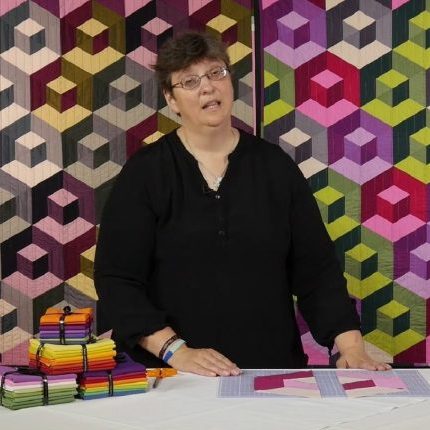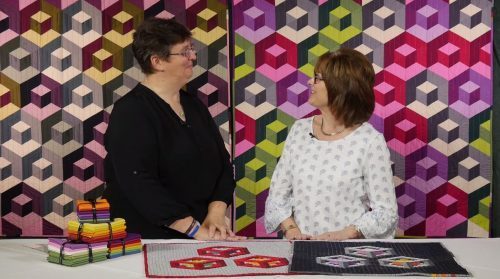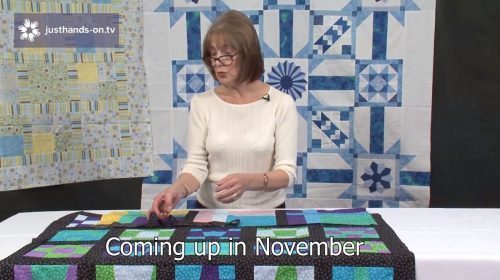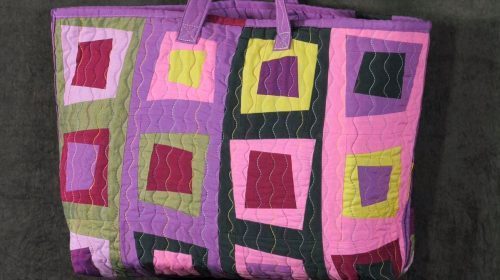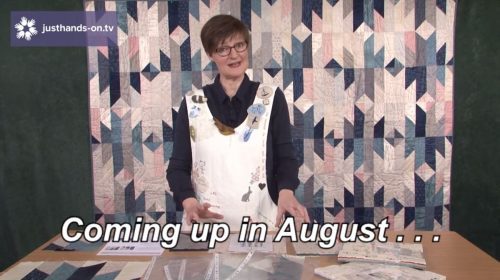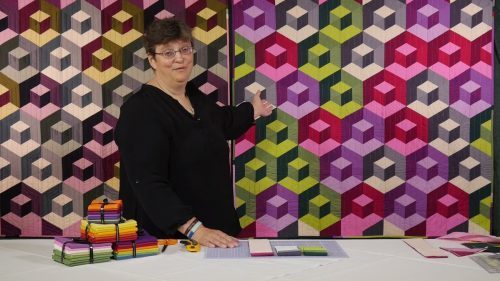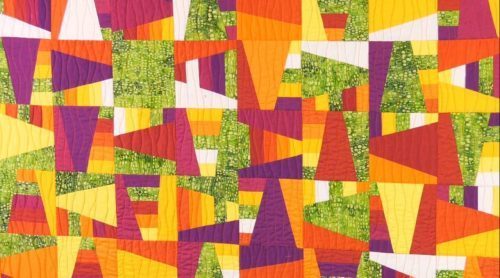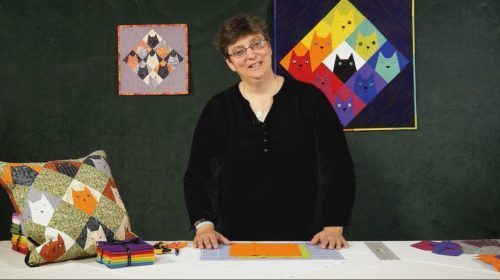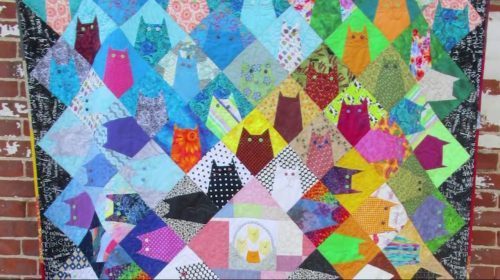About Helen
Helen can’t remember a time when she wasn’t making something. As a young child her greatest joy was the ‘useful box’ which lived in the cupboard under the stairs and was the repository for empty egg boxes, cereal packets and yogurt pots, all fantastic stuff to feed a creative mind.
When Helen was seven her Grandmother taught her to sew and opened her mind to a whole new avenue of creative expression. Helen designed and made her first full size cross-stitch sampler before she was nine, and made various garments for dolls and bears and eventually herself, creating patterns by the simple method of lying on the floor and drawing round herself, much to the amusement of her Mother & Grandmother – both accomplished dressmakers.
Helen worked in graphics, and then advertising, for ten years, until she and her partner had the opportunity to quit the London rat-race and move to Yorkshire to run the family’s marina business. During this time, Helen taught herself patchwork, quilting, beading, origami, marquetry, doll making and canvas work. She discovered that, not only does she love crafting and the challenge of learning something new, she also had a hitherto undiscovered competitive streak deep inside which prompted her to hone these new skills to the point where she regularly won awards in the handicrafts section of shows.
Fifteen years later, Helen decided to combine her experience of running a business with her enduring passion for crafting to start LITTLE PATCH POCKETS. Helen creates patchwork designs and writes patterns so you can make your own unique, lovely things. She also offers kits, classes and workshops where she teaches her designs.
Helen loves using three dimensional illusions in her work. According to Helen, “I love to create an illusion of three dimensions and many of my designs are based on this concept. I do occasionally use curved lines, but since my mind seems to work in straight lines I find lots of inspiration in architecture, engineering and even mathematical concepts. I like accurate piecing and often create my own foundation paper pieced blocks in order to achieve the precision I enjoy.”
Helen is an avid follower of the Modern Quilt Movement as well as a great believer that quilts are for using: “for your three-year-old to drag down the garden, for the dog to sleep on and to go in the washing machine.”
Signature Technique
Modern Quilting
Helen’s Top Tips
- Colour choice is key to 3D work. Always select three shades of the same colour, or light, medium and dark tones of the same colour.
- Auditioning fabrics is one of the most useful skills any patchwork artist can develop. A quilt needs contrast of tone, however subtle, to accentuate the design.
- Never use a fabric with a low thread count or a loose weave, however good the colour. Thinner fabrics do not handle well, will fray quickly and will not wear well in the finished quilt. It is worth investing in good fabrics.
- Many of the fabrics at the cheaper end of the market cover up this deficiency with excessive amounts of surface ink and stiffening treatments – the secret is to turn to the back and check.
- Always look for a fabric that is likely to shrink only minimally. Some shrinkage is to be expected, especially when combining fabrics from different manufacturers. Look on this as part of the charm of a washed quilt. However, cheap fabric with an open, loose weave will shrink hugely when washed, ruining your work.
Videos
Books and Patterns
Posts
A great idea for recycling that old blazer (that’s not worn out!)
Taking inspiration from one of our videos Jo made this great cushion for her son on which she managed to use the pockets to embellish the front: and she also took the opportunity to use the labels from the blazer, which included not only Ben's name but also 'Made in England' - isn't that cute!!!! If you like this idea - have you seen our video: Easy Closure for a Cushion with Valerie Nesbitt
Is backstitching necessary for strip piecing?
Question from Youtube
Still a little new to quilting and enjoy it already! One thing I noticed is that you didn't back stitch when starting to join a new row. Is it necessary? Thanks, I know this is probably a simple question. Answer Nope the backwards and forwards and fixing stuff isn't necesary as you will be sewing across at rightangles at some future point (and at the time of sewing you don't know where you will be cutting). Make sure the stitch length isn't too long though - 2.2 or 2.4 is perfect for strip piecing (and piecing in general).
Recyling men’s ties
Question: Having watched the video: (click here to view) How many ties were used to make the quilt in the video, recycling men’s ties? I would like to make a quilt the same size as the one in the video. Would you recommend this project to a beginning quilter? Answer from Valerie
Sorry I can't recall how many ties I used BUT each tie contains a huge amount of fabric once its unravelled and if you cut into uneven strips then you can use it all (I still have a stash of large scraps for another quilt);
Its a great quilt for beginners BUT remember that the ties are on the bias of the grain so the strips will move until you anchor them onto their calico (or similar) backing - if you are a complete beginner spray starch may help you during the sewing process.
Its extremely forgiving especially since you can trim the blocks back to be exactly the same size as each other - whether you use the complete block of ties or couple it with a plain piece of fabric to make the half-square triangle unit - which in turn means you need to make only half the number of original blocks.

